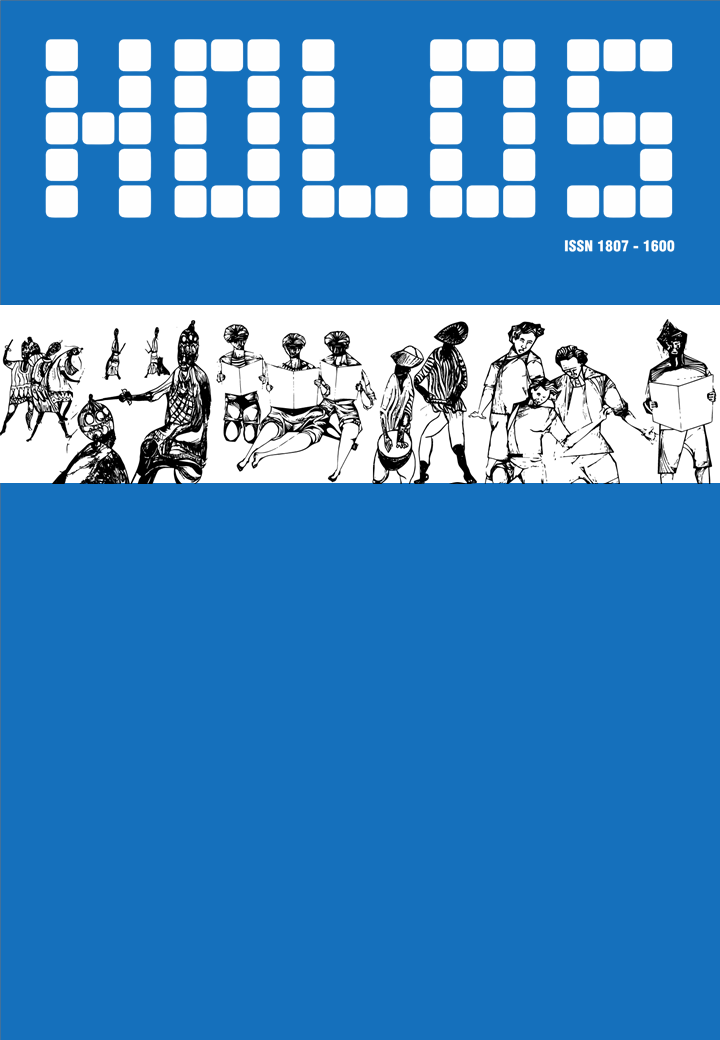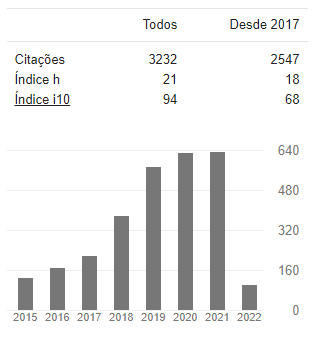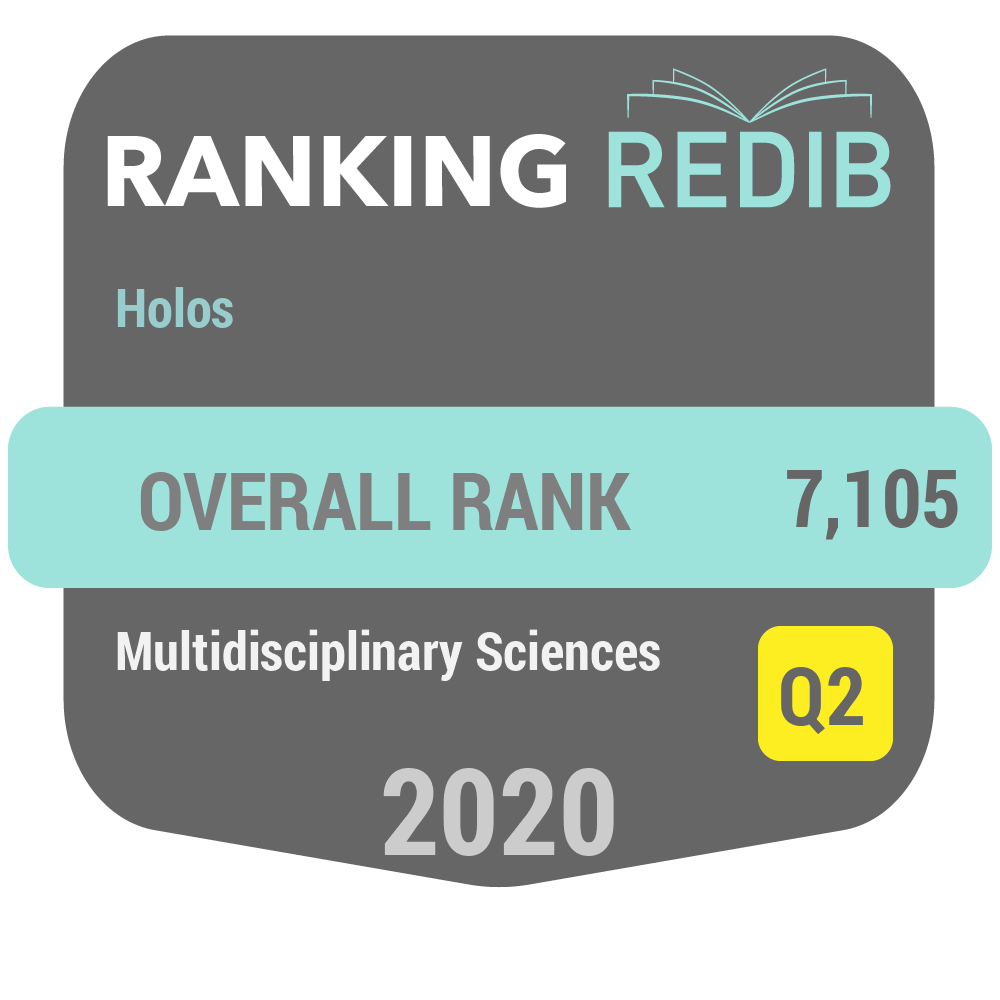Antecedentes del estudio en estudiantes universitarios: Validación de un modelo de ecuaciones estructurales basado en la teoría del comportamiento interpersonal en Chile
DOI:
https://doi.org/10.15628/holos.2016.4828Palavras-chave:
Teoría del Comportamiento Interpersonal, Educación Superior, Modelamiento de Ecuaciones Estructurales, ChileResumo
El objetivo de este trabajo es explorar los factores que predicen el comportamiento de estudio en los alumnos universitarios. Se utilizó una encuesta basada en la Teoría del Comportamiento Interpersonal realizada a 137 estudiantes universitarios chilenos para medir este fenómeno. El Modelado de Ecuaciones Estructurales fue usado para analizar el modelo. Los resultados indican que el modelo explica el 54% del comportamiento de estudio, y apuntan a el hábito de como el antecedente clave de este comportamiento.Downloads
Referências
AJZEN, I. (1991). The Theory of Planned Behavior. Organizational Behavior and Human Decision Processes, 50(2), 179-211.
AJZEN, I., & FISHBEIN, M. (1980). Understanding attitudes and predicting social behaviour. Englewood Cliffs, NJ: Prentice-Hall.
AL-KHALDI, M. A., & WALLACE, R. O. (1999). The influence of attitudes on personal computer utilization among knowledge workers: the case of Saudi Arabia. Information & Management, 36(4), 185-204.
BAMBERG, S., & SCHMIDT, P. (2003). Incentives, morality, or habit? Predicting students’ car use for university routes with the models of
Ajzen, Schwartz, and Triandis. Environment and behavior, 35(2), 264-285.
BEALANGER, D., GODIN, G., ALARY, M., & BERNARD, P. M. (2002). Factors Explaining the Intention to Use Condoms Among Injecting Drug Users Participating in a Needle?Exchange Program. Journal of Applied Social Psychology, 32(5), 1047-1063.
BOYD, B., & WANDERSMAN, A. (1991). Predicting Undergraduate Condom Use with the Fishbein and Ajzen and the Triandis Attitude?Behavior Models: Implications for Public Health Interventions1. Journal of Applied Social Psychology, 21(22), 1810-1830.
BROWN, R. L., BAUMANN, L. J., HELBERG, C. P., HAN, Y., FONTANA, S. A., & LOVE, R. R. (1996). The simultaneous analysis of patient, physician and group practice influences on annual mammography performance. Social science & medicine, 43(3), 315-324.
CHEUNG, W., CHANG, M. K., & LAI, V. S. (2000). Prediction of Internet and World Wide Web usage at work: a test of an extended Triandis model. Decision Support Systems, 30(1), 83-100.
CHIN, W. W. (1998). The partial least squares approach for structural equation modeling. In G. A. Marcoulides (Ed.), Modern Methods for Business Research (pp. 295-336). Hillsdale, NJ: Lawrence Erlbaum Associates.
DANNER, U. N., AARTS, H., & VRIES, N. K. (2008). Habit vs. intention in the prediction of future behaviour: The role of frequency, context stability and mental accessibility of past behaviour. British Journal of Social Psychology, 47(2), 245-265.
DONOSO, S., & SCHIEFELBEIN, E. (2007). Análisis de los modelos explicativos de retención de estudiantes en la universidad: una visión desde la desigualdad social. Estudios pedagógicos, 33(1), 7-27.
FERNÁNDEZ-HILEMAN, M. D. R., CORENGIA, Á., & DURAND, J. (2014). Deserción y retención universitaria: una discusión bibliográfica. Pensando Psicología, 10(17), 85-96.
FORNELL, C., & LARCKER, D. F. (1981). Evaluating Structural Equation Models with Unobservable Variables and Measurement Error. 18(1), 39-50.
KAPPE, R., & VAN DER FLIER, H. (2012). Predicting academic success in higher education: what’s more important than being smart? European Journal of Psychology of Education, 27(4), 605-619.
KARAHANNA, E., & STRAUB, D. W. (1999). The psychological origins of perceived usefulness and ease-of-use. Information & Management, 35(4), 237-250.
KENNEDY, G. J. (2013). The Elephant in the Hall: Motivating the Study of Student Motivation and Self-regulation in Studies of Academic Achievement and Persistence in Higher Education. International Journal of Higher Education, 2(4), 179-190.
KOCK, N. (2015). WarpPLS 5.0 user manual. Laredo, TX: ScriptWarp Systems.
LANKEN, B., AARTS, H., KNIPPENBERG, A., & KNIPPENBERG, C. (1994). Attitude versus general habit: antecedents of travel mode Choice. Journal of Applied Social Psychology, 24(4), 285-300.
LI, H., & LAI, V. S. (2008). Antecedents of Behavioral Intention of Virtual Community Participation: An Empirical Study. AMCIS 2008 Proceedings, 326.
LIMAYEM, M., & HIRT, S. G. (2003). Force of habit and information systems usage: theory and initial validation. Journal of the Association for Information Systems, 4(1), 65-97.
MATICKA?TYNDALE, E., HEROLD, E. S., & MEWHINNEY, D. (1998). Casual sex on spring break: Intentions and behaviors of Canadian students. Journal of Sex Research, 35(3), 254-264.
MATICKA?TYNDALE, E., HEROLD, E. S., & OPPERMANN, M. (2003). Casual sex among Australian schoolies. Journal of sex research, 40(2), 158-169.
MOODY, G. D., & SIPONEN, M. (2013). Using the theory of interpersonal behavior to explain non-work-related personal use of the Internet at work. Information & Management, 50(6), 322-335.
ORTIZ, A. P., PÉREZ, V. R. D., & SALAZAR, O. C. (2015). Una aproximación conceptual a la retención estudiantil en Latinoamérica. Revista Interamericana de Investigación, Educación y Pedagogía, 7(2), 271-285.
OUELLETTE, J. A., & WOOD, W. (1998). Habit and intention in everyday life: the multiple processes by which past behavior predicts future behavior. Psychological bulletin, 124(1), 54-74.
TENENHAUS, M., VINZI, V. E., CHATELIN, Y. M., & LAURO, C. (2005). PLS path modeling. Computational Statistics & Data Analysis, 48(1), 159-205.
TOUS, C., & MEDINAS, M. (2007). Motivaciones para el estudio en universitarios. Anales de psicología, 23(1), 17-24.
TRIANDIS, H. (1980). Values, attitudes, and interpersonal behaviour. In H. E. Howe (Ed.), Nebraska symposium on motivation, 1979: Beliefs, attitudes and values (pp. 195-259). Lincoln, USA: University of Nebraska Press.
TRIANDIS, H. C. (1977). Interpersonal behavior. Monterey, CA: Brooks/Cole Publishing Company.
VALOIS, P., DESHARNAIS, R., & GODIN, G. (1988). A comparison of the Fishbein and Ajzen and the Triandis attitudinal models for the prediction of exercise intention and behavior. Journal of Behavioral Medicine, 11(5), 459-472.
ZALESNY, M. D. (1985). Comparison of economic and noneconomic factors in predicting faculty vote preference in a union representation election. Journal of Applied Psychology, 70(2), 243.





































